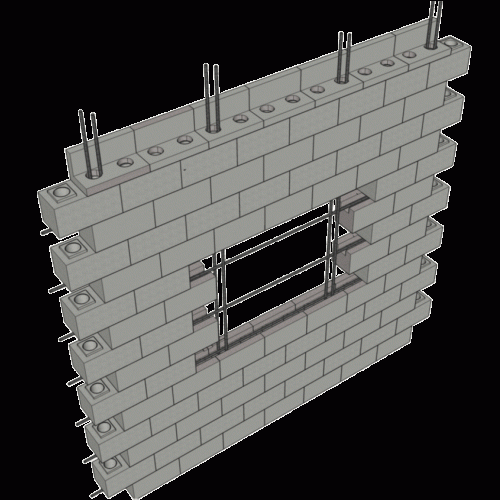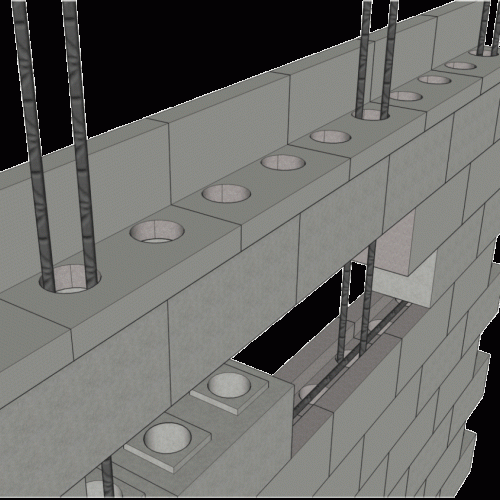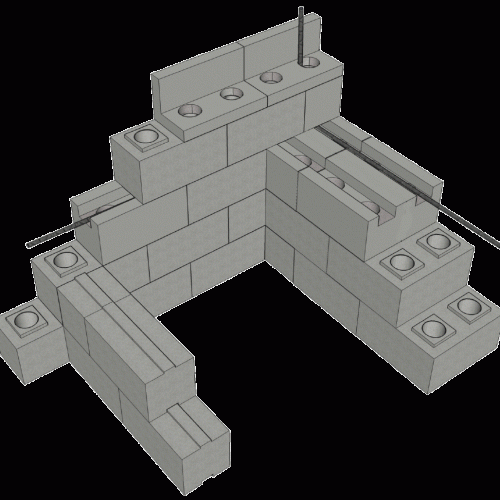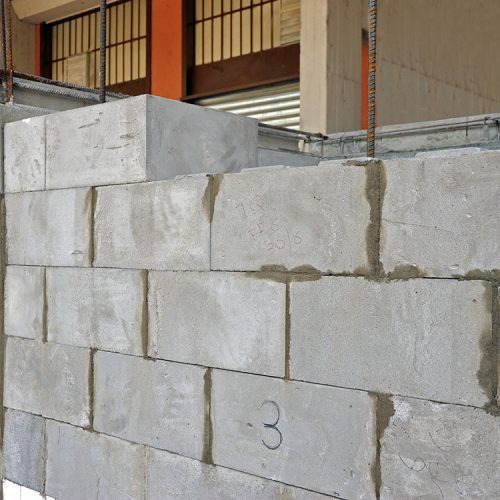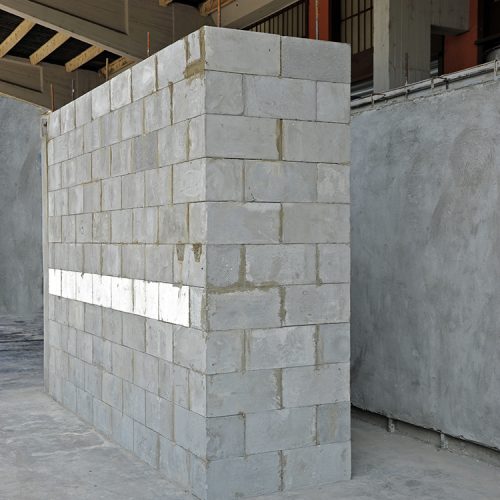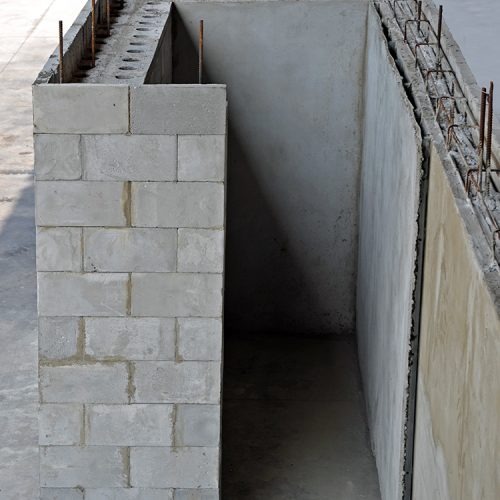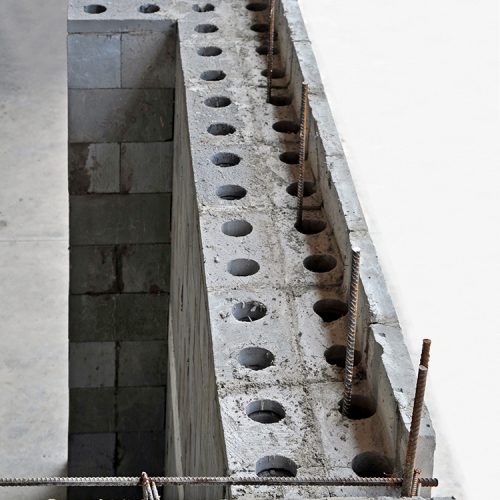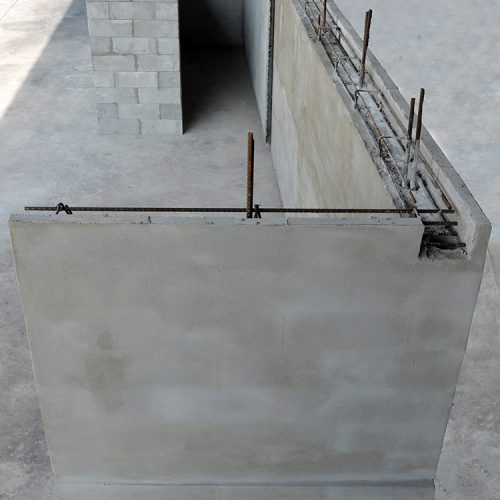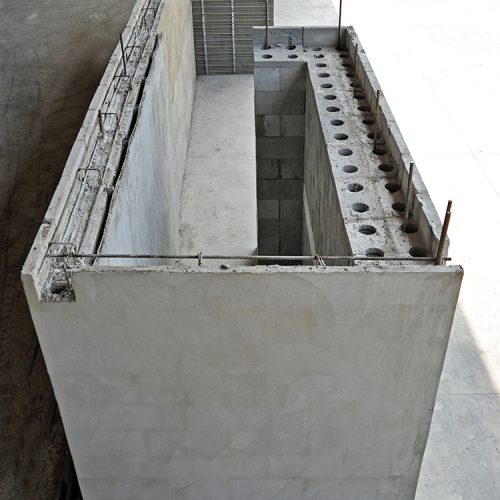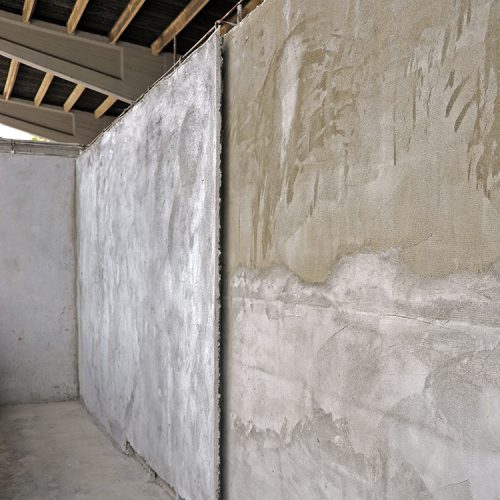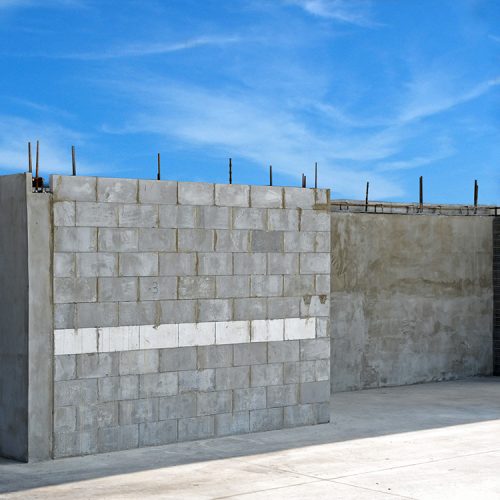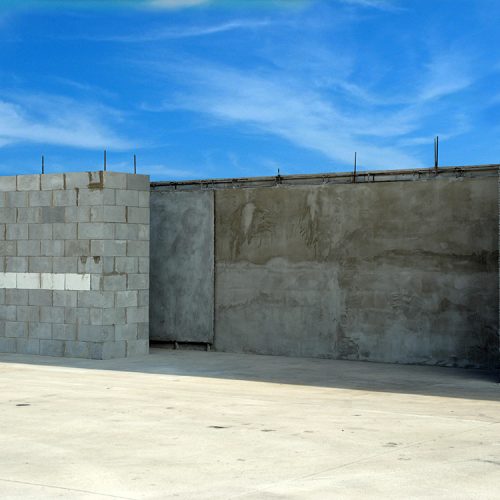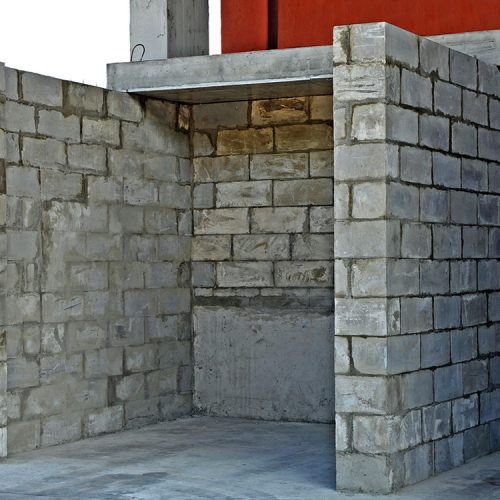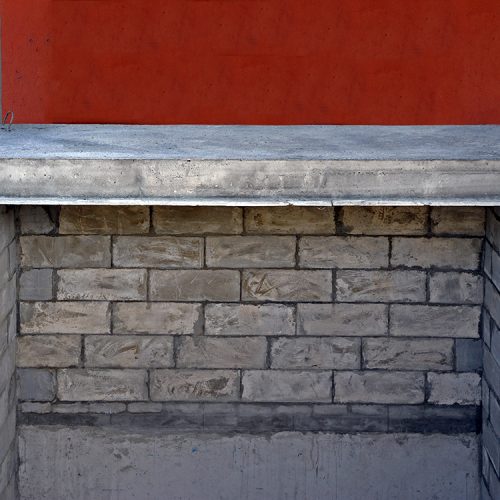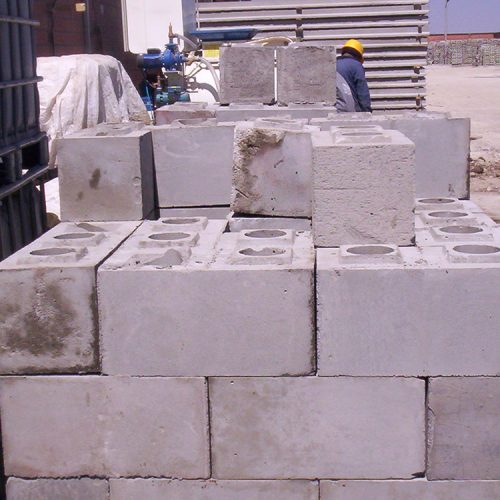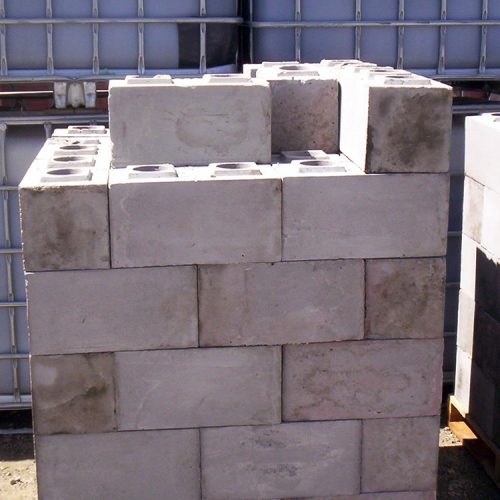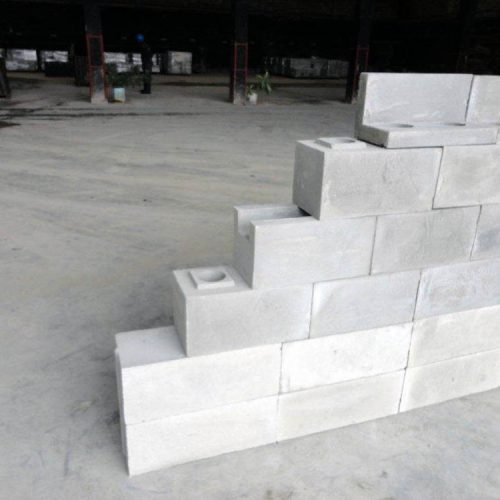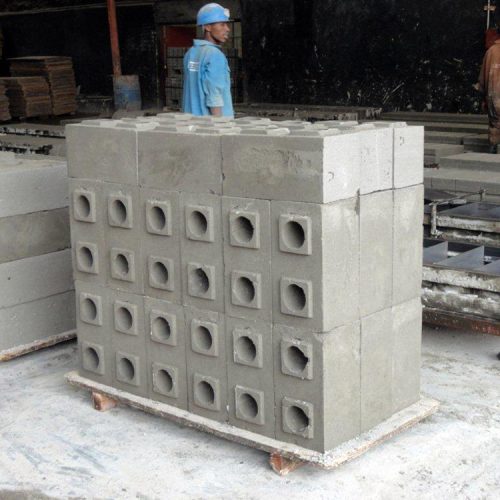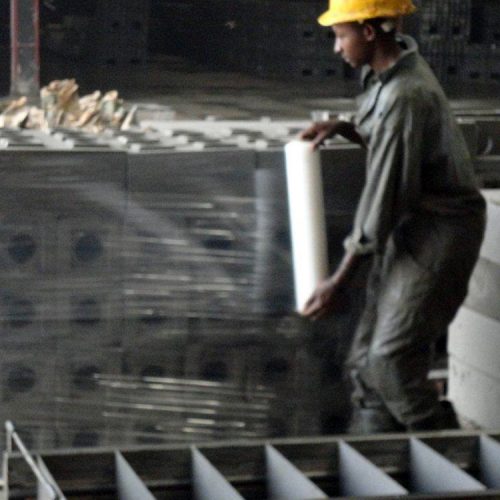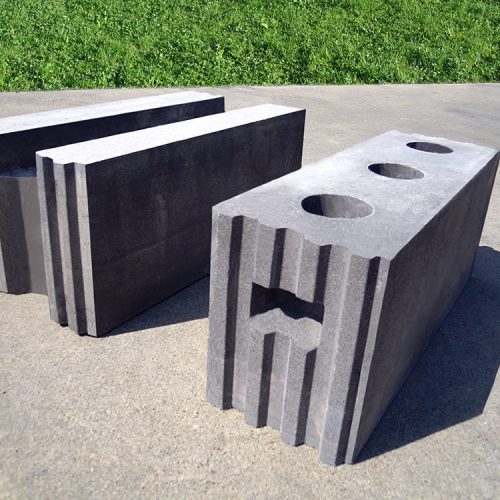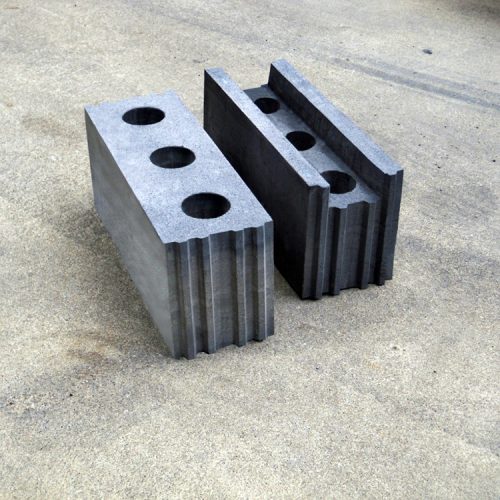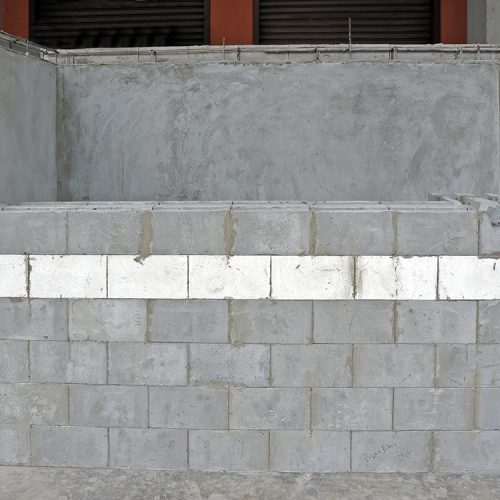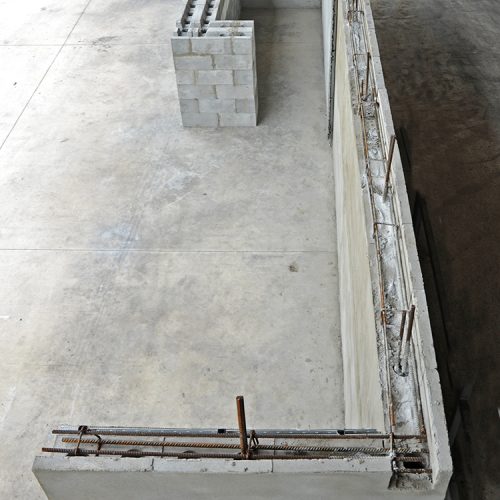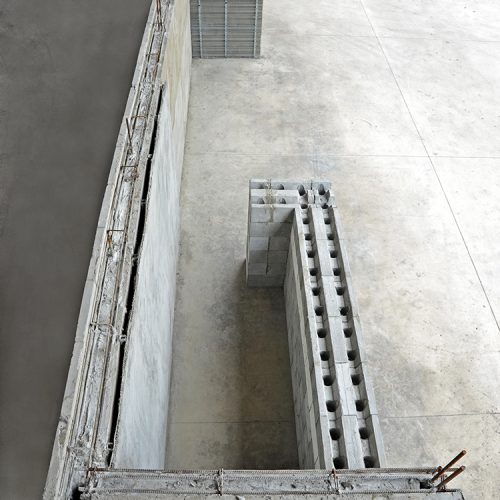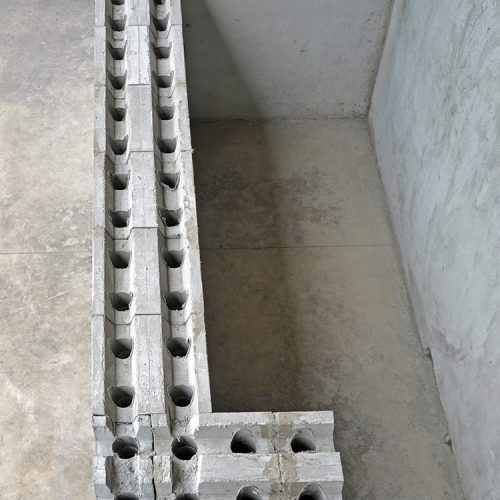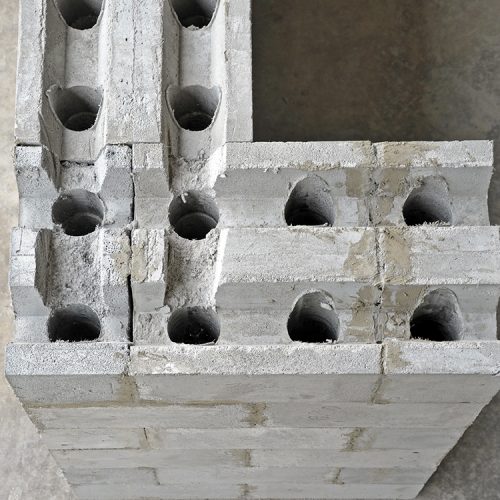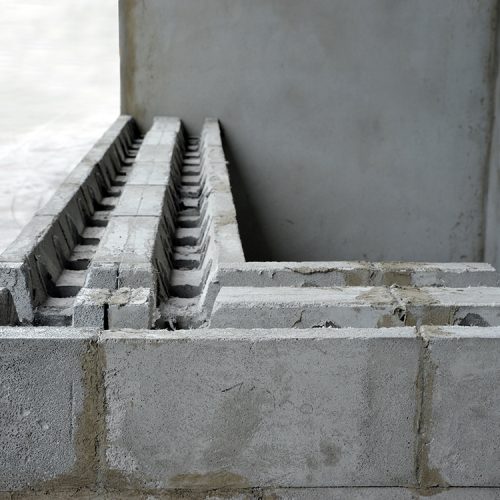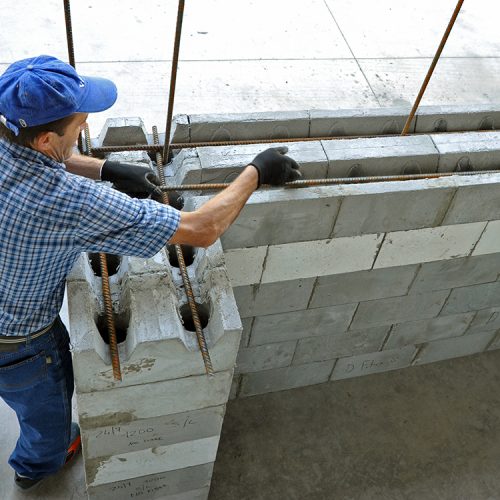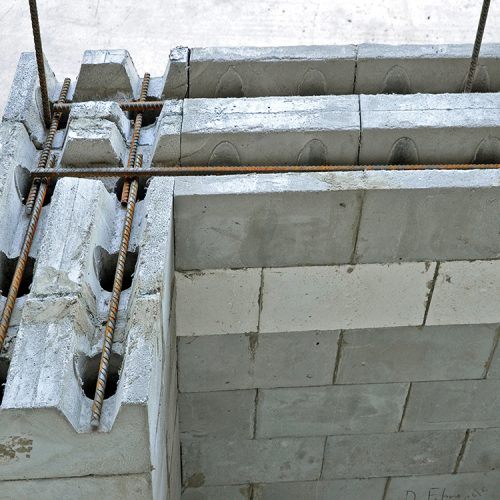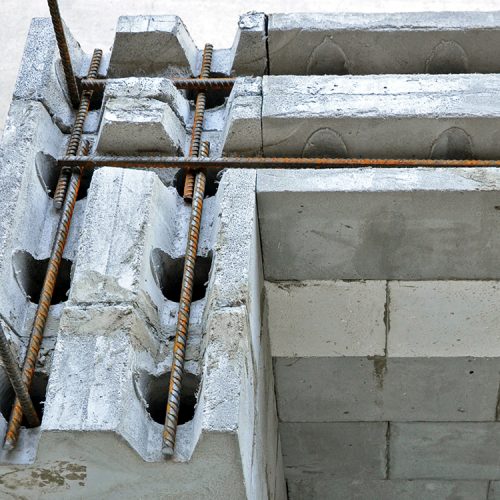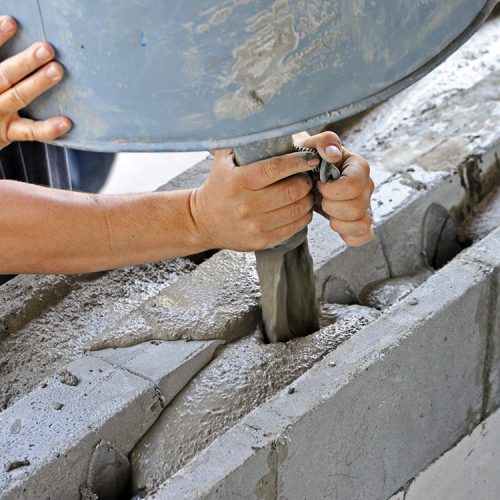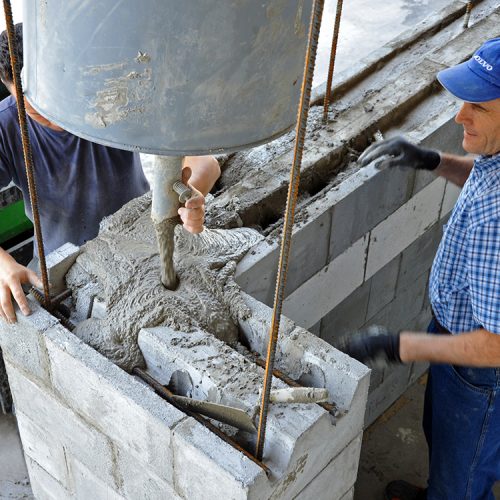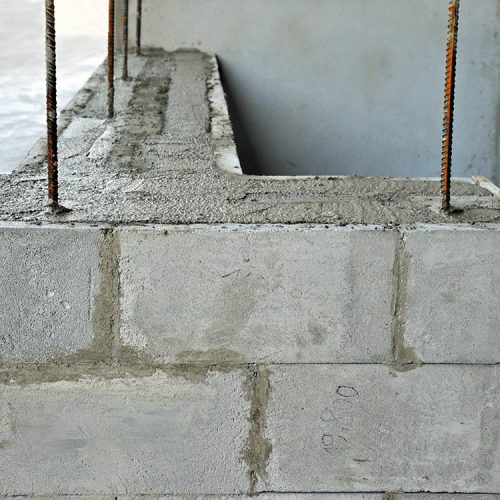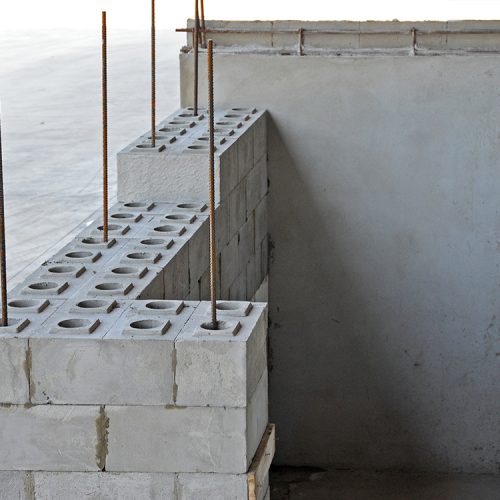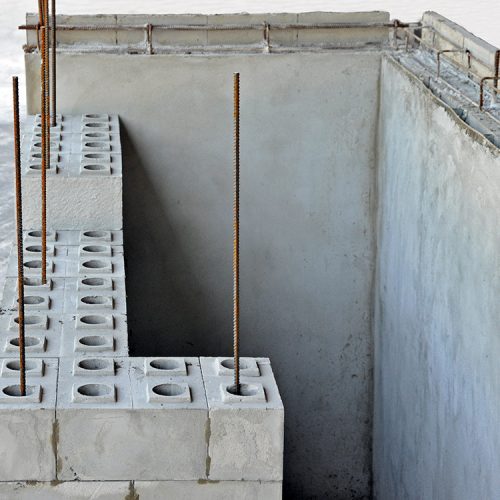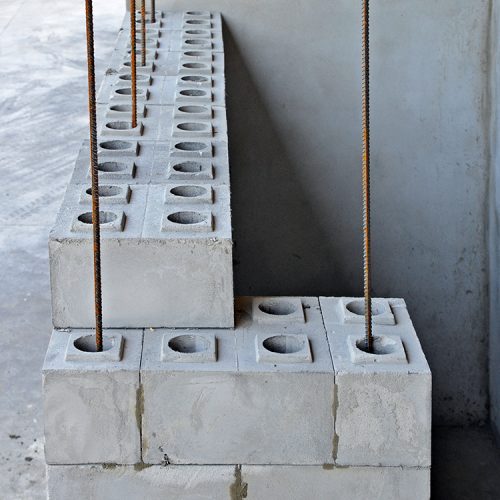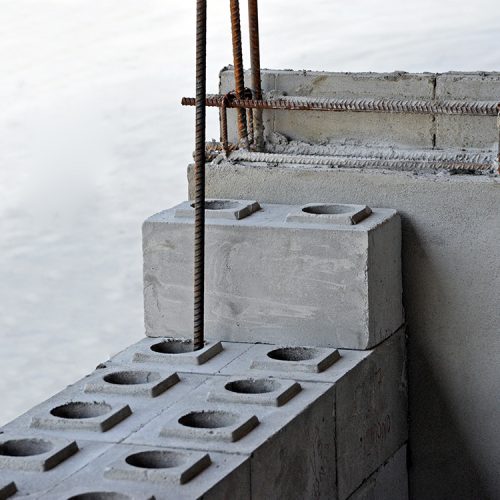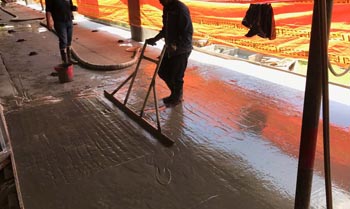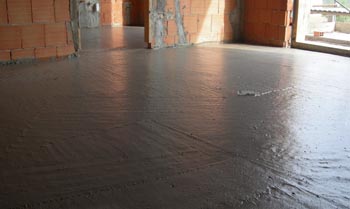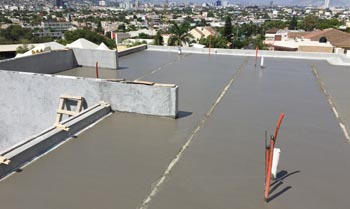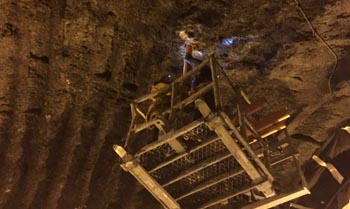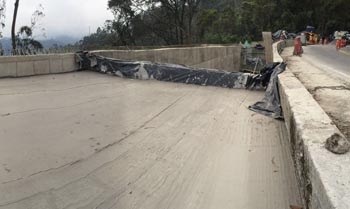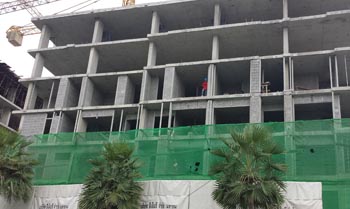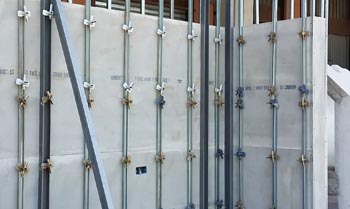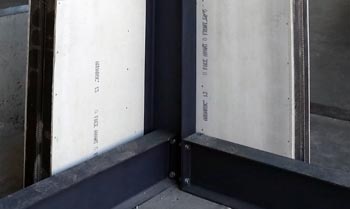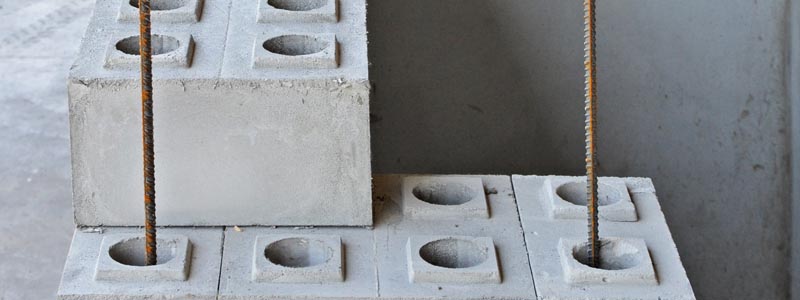
SEISMIC BLOCKS IN CELLULAR CONCRETE (3C)
Making Isoltech blocks does not require costly plant, furnaces or autoclaves. The blocks are made with the IBS-08 mixer and with specially designed formwork for the various dimensions and structural requirements.
“It is immediately evident that the lack of a furnace for drying, and therefore of the energy cost for operating it, plays a fundamental role in favour of the Isoltech solution. Furthermore, as the amount of electricity required is somewhat low (10.6 kW), the theory of using solar panels for production of the same becomes more achievable and, consequently, lowers the cost of production of the blocks practically to zero from the point of view of energy pay-back.”
Fonte: Isoltech Cellular Concrete Block Studio: Analysis of static and energy behaviour.
Isoltech 3C Blocks: More rapid, precise and cleaner assembly.
Once the first layer of cellular concrete seismic blocks have been levelled, the remainder are assembled without the need for a binding agent to keep the wall true: the MF (Male/Female) joint on the 3C blocks carry out this role, offering many advantages:
– less use of binding agents (only necessary for the block vertical faces);
reduced use of plaster because the blocks are perfectly aligned and surface corrections are not necessary;
– notable saving on the cost of qualified labour and, of course, time;
– there is no need for load bearing pillars (for buildings of up to 3 floors);
– they are easily cut using a traditional saw;
– the male-female outlines (“MF” blocks) allow for dry assembly, subsequently to be bonded together with a fluid mortar in sand and concrete through the columns formed by the vertical cavities in the superimposed blocks. The insertion of reinforcing rods (with “U” blocks) allows for building walls in areas of seismic activity; furthermore, it is possible to reinforce the floor slabs (with “L” blocks) thanks to the particular jointing of these ring beam blocks;
– the following special cellular concrete seismic blocks are also available: Channelled blocks for arches and horizontal rigidity – Perforated blocks for vertical structures;
Take a look at the Isoltech System components and the positions for iron reinforcing, be that vertical or horizontal.
The 3C cellular concrete blocks have Continuous Cylindrical Cavities and this characteristic confers to them particular anti-seismic capabilities. Thanks to these cavities (and to the U blocks with channels for horizontal reinforcing) the whole wall structure may be connected with iron rods, be that horizontally or vertically.
Furthermore, given that the mechanical resistance of the reinforced wall is that of the cylindrical columns filled with iron and mortar, the density of the raw (non-autoclaved) cellular concrete blocks may be very low, which gives it a high thermal insulation value while at the same time reducing the weight of the load bearing structure.
From tests carried out by the University of Bergamo, the Isoltech 3C cellular concrete blocks returned better results than the best forecast.
A simple example: In the test with a wall built of 800 kg/m3 blocks with a density of 1200 kg/m3, the drift of 0.5‰ was moved to a 4‰, seismic intensity value for project Regulations. Then increasing the shift to a value of 12.5‰, greatly superior than the forecast objectives.
The anti-seismic performance of the cellular concrete blocks in the scientific tests was excellent and was superior to traditional materials
SEISMIC RESISTANCE TESTS WITH ISOLTECH 3C CELLULAR CONCRETE BLOCKS
PHOTO GALLERY: 3C SISMIC BLOCKS IN CELLULAR CONCRETE
 CONTACT US TO RECEIVE MORE INFORMATION
CONTACT US TO RECEIVE MORE INFORMATION
